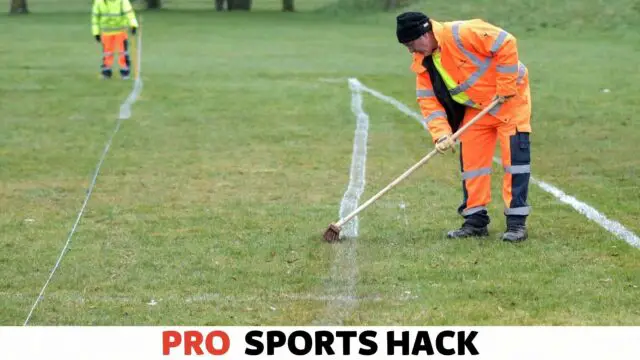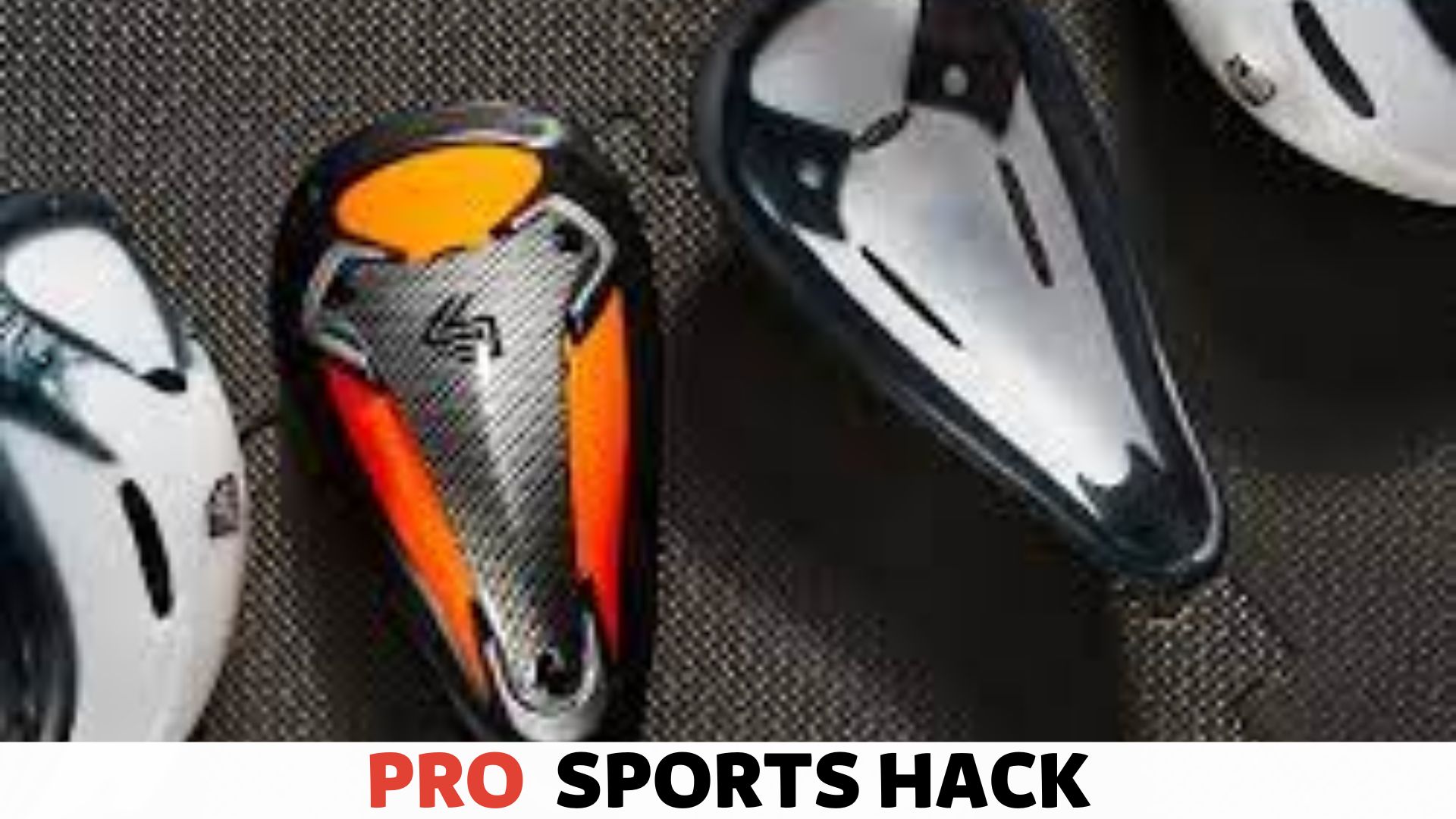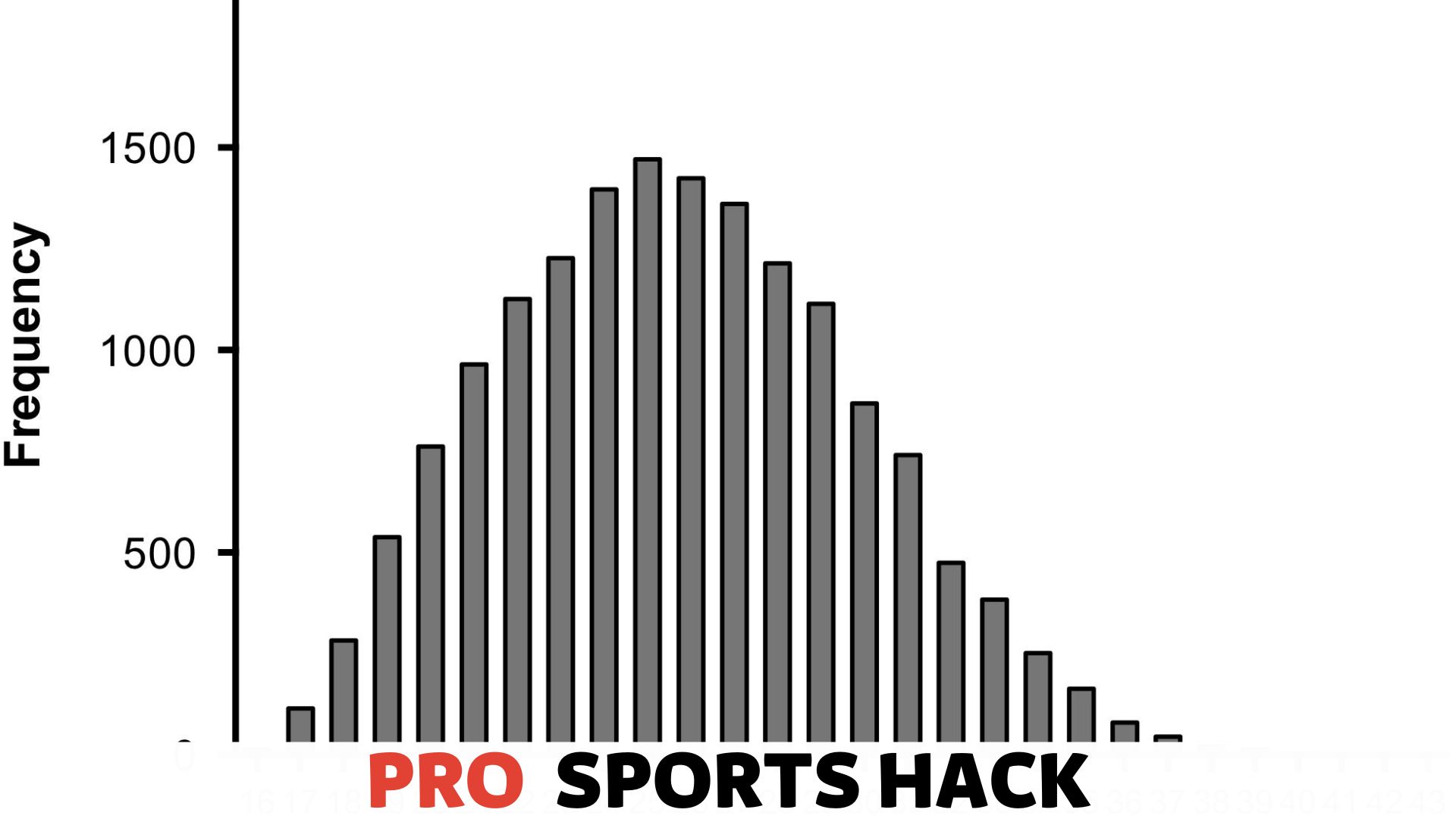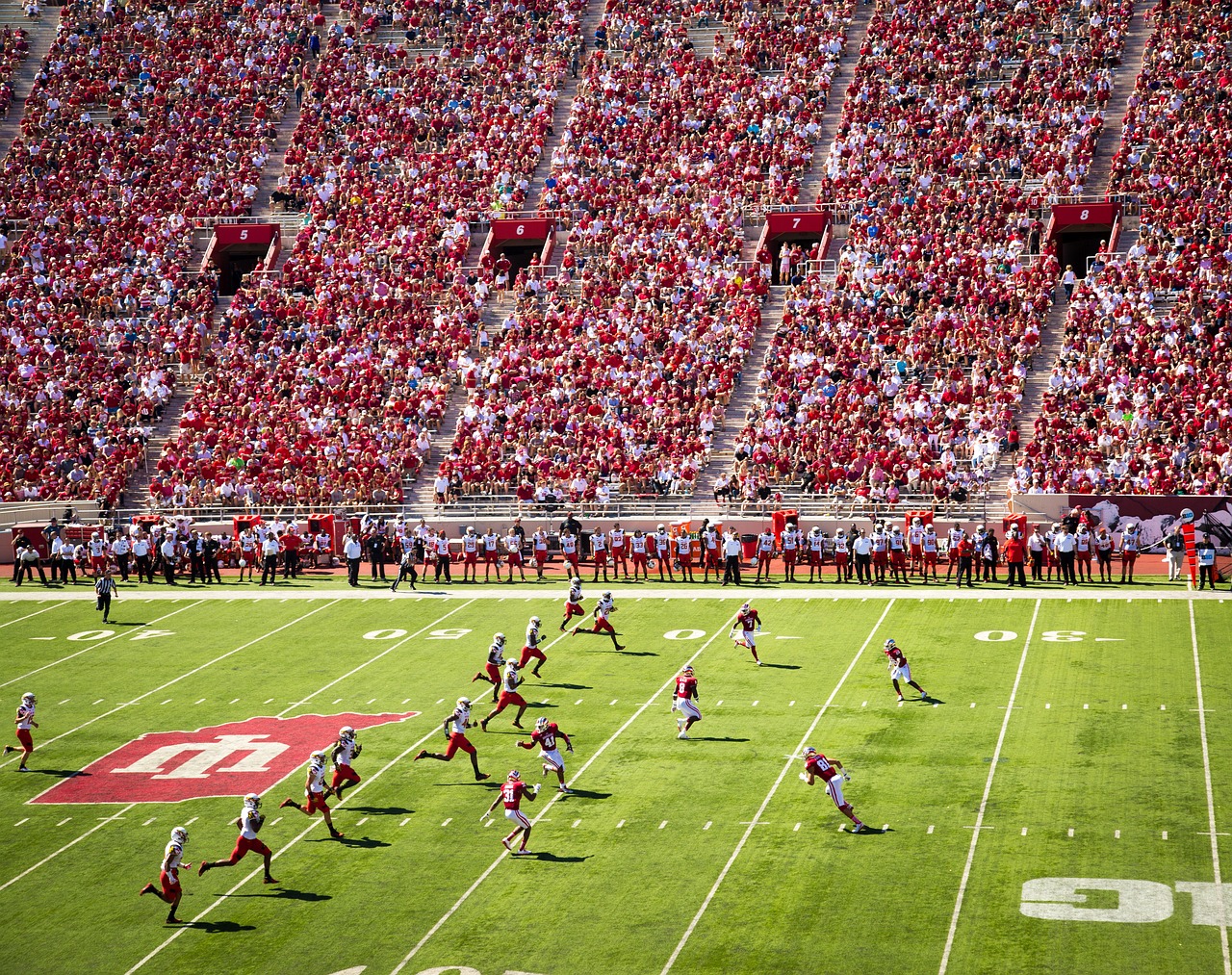
Painting straight lines on a football field requires careful planning and proper equipment. To achieve crisp lines, use a field marking machine and apply the paint in sections, working from one end of the field to the other.
Start by measuring the field and creating guidelines with cones or string to mark where the lines will go. Then, load the machine with paint and use the guidelines as a reference while operating the machine slowly and steadily.
With these steps in mind, you can create professional-looking lines on your football field that will withstand the wear and tear of the game.
Understanding the Field and Regulations
A pristine and well-maintained football field is beautiful, and it all starts with the lines on the field. These lines are crucial for determining penalties, boundaries, and scoring.
Therefore, understanding the regulations for painting straight lines on a football field is essential.
Here are the key points to consider:
Dimensions
- A standard football field measures 100 yards in length and 160 feet in width.
- The field is divided into two halves, with each half measuring 50 yards in length and 80 feet in width.
- At each end of the field, there is an end zone that measures 30 feet long and runs the full width of the field.
Markings
- The markings on a football field are crucial for determining penalties, scorekeeping, and boundaries.
- The field is marked with a centerline, which runs the length of the field and divides it in half.
- The field is also marked with yard lines, which run perpendicular to the sidelines and are numbered in increments of ten.
- The end zones are marked with a goal line and two sidelines.
- Finally, the hash marks are used to determine the spot of the ball after each play.
Field Regulations for Painting Straight Lines
- All lines should be white, and the shade of white should be consistent throughout the field.
- The lines should be 4 inches wide, with a distance of at least 5 feet between each line.
- The paint should be water-based and dry quickly to avoid any injuries to the players.
- All markings should be visible from the sidelines and the press box.
- Properly measuring and marking the field is crucial for safety, fairness, and aesthetics.
Painting straight lines on a football field requires careful attention to detail and adherence to regulations.
Understanding the dimensions, markings, and field regulations is essential for creating a safe, fair, and beautiful playing field. If you’ve ever wondered about the various markings on a football field, like ‘SS,’ which stands for ‘Sideline to Sideline,’ you’ll find our guide to painting straight lines quite informative.
Preparing the Field
Painting straight lines on a football field is not as easy as it seems. If you’ve ever watched a football game, you have probably noticed how perfectly straight the lines are on the field. It requires careful preparation and execution to get it right.
Preparing the field is the crucial first step to achieving accurate lining. We’ll talk about the essential steps you need to take before painting straight lines on a football field.
Clearing the Field
Clearing the field is the initial task before leveling and priming. The field must be bare and clean, with no debris or rubbish.
Follow these simple steps to clear the field:
- Have enough trash bags handy.
- Pick up any visible debris with your hands.
- Rake the whole field to gather all smaller debris.
- Throw all the collected rubbish in the trash bags.
After successfully clearing up the field, we need to move on to the next step in the preparation process.
Leveling the Field
Leveling is an essential step that needs careful attention. If the field isn’t level, the lines may be crooked or irregular.
Here are some tips to ensure that your field is level:
- Check the field for bumps or unevenness.
- Use sand to level places that need it and tamp the sand down.
- Repeat the process until the field is smooth.
Priming the Field
Once the field has been leveled, it’s time to prime the field. Priming the field ensures that the paint adheres well to the surface.
Here are some tips on priming the field:
- Choose a high-quality primer that is suitable for sports fields.
- Using a sprayer, start priming the field from one end to the other.
- Repeat the process until the whole field is primed.
- Allow time for the primer to dry before starting to paint the lines.
Preparing the field is the key factor in achieving perfectly straight lines on a football field. Remember to clear the field, level it, and prime it before painting. Following these steps will help to ensure that the lines are accurate and straight.
As we explored the art of painting those essential yard lines, we also shared tips on how to make a composite football tacky, ensuring a firm grip and precise throws for your game.
Gathering the Tools and Materials for Painting Straight Lines on a Football Field
To create straight and precise lines on a football field, you need to have the right tools and materials.
Here are the essential items you should gather before starting your project:
- Paint sprayer: A paint sprayer is a tool that will help you apply the paint uniformly and quickly, saving you time and effort.
- Paint: It is important to choose a durable and weather-resistant paint that is suitable for outdoor use. You can also choose from bright colors to make the lines more visible.
- Measuring tape: You will use a measuring tape to measure the field and mark where to paint the lines.
- Chalk line applicator: A chalk line applicator creates straight lines on the turf.
- Chalk or marking dust: It is crucial to choose chalk or marking dust that is made for turf, so it won’t harm the grass.
- Stencils: Stencils are useful for creating letters or symbols, as well as sports logos or end zones.
Make sure you are using high-quality, reliable tools and materials before starting your project, which will help you produce a professional-looking finish.
Establishing the Baseline
Measuring the Football Field
Before painting straight lines on a football field, accurately measuring it is crucial. This is the first and most important step to ensure the lines are straight and even.
Here’s what you need to do when measuring a football field:
- Measure the length of the field: Start at one end zone and measure to the other end zone. The standard length of a football field is 100 yards (300 feet).
- Measure the width of the field: The standard width of a high school football field is approximately 53.3 yards (160 feet), and 58.3 yards (175 feet) for a college or NFL field.
- Verify the hash mark positions: Football leagues have different positions. For high school football, the hash marks are typically 53 feet, 4 inches apart. In college and the NFL, they are 40 feet apart. Measure the distance accurately to ensure that the hash marks are painted correctly.
- Check the slope: The football field should be sloped to help drainage. Use a tool like transit to ensure the slope is correct so the lines look straight and even.
Once you have taken the measurements, you can mark the field for painting.
Marking the Centerline
The centerline is an essential part of the football field, and it helps players orient themselves.
Here’s how you can mark the centerline for straight-line accuracy:
- Start at one of the end zones: Begin at the end zone and measure 50 yards across the field to the other end zone.
- Use marking chalk and a long piece of twine: Tie one end of the twine securely to a stake placed at the sideline, then stretch the twine along the center of the field to the opposite sideline and repeat with another stake. Mark both sidelines at 5, 10, 20, 30, and 40 yards on the twine with a piece of marking chalk.
- Verify the centerline: The centerline should be straight and evenly spaced. Use a transit or a laser level to ensure the centerline is marked accurately.
Marking the Other Lines
When marking the other lines on the football field, remember that accuracy is essential.
Follow these simple steps to ensure that all the lines are straight and even:
- Start at the centerline: When marking the other lines on the field, start at the centerline and work outward. This will ensure that all the lines are straight.
- Use marking equipment: Depending on the paint you’re using, you can use a roller, sprayer, or other marking equipment to ensure an accurate and even application.
- Use guidelines to ensure straight lines: You can use masking tape or chalk lines to help guide the paint line and ensure it’s straight. Be sure to remove any excess tape or chalk before painting.
By using accurate measurements, marking the centerline, and carefully marking the other lines, you can easily paint straight lines on the football field. It may take some time to perfect your technique, but with practice, you can paint straight lines like a pro.
Creating Straight Sidelines
The sidelines are a football field’s most important boundary lines, marking the in and out of bounds area. They must be straight and crisp so that players and referees can quickly determine if the ball is in or out of play.
Here are some tips for painting straight sidelines on a football field:
- Plan and measure: Before painting the sideline, measure from the end line with a tape measure and make a mark every five yards. Connect the marks with a straight string or chalk line to ensure the sideline is straight and at the proper angle.
- Use a machine: Use a lining machine for the neatest and most efficient sidelines. This machine has a wheel that runs along the sideline and evenly dispenses paint, ensuring a straight line. Ensure that the machine is calibrated and adjusted correctly before you start painting.
- Apply multiple coats: It’s important to apply at least two coats of paint for the sideline, with a mandatory 15-minute break between each coat. This will ensure that the paint is thick enough to be visible, reducing the chance that the line will have to be repainted throughout the match.
- Opt for high-quality paint: Choose high-quality paint for your sideline. Different types of paints are available, such as water-based or solvent-based, and they all have different drying rates, colors, and longevity. Choose a suitable paint for your field, environment, climate, and budget, and always follow the manufacturer’s instructions.
- Remove excess paint: It’s advisable to carry some cloth or wet sponge while painting to clean any excess paint from the wheels or sides of the line machine, as it can ruin the quality of the sideline.
- Dry overnight: The sideline must be given time to dry correctly. Leave it to dry overnight before allowing anyone to walk on it.
- Inspect and touch-up: Before using the field, check the sidelines for any missed spots or spots where the lines have come out uneven. Touch up any missed spots with the lining machine and paint over crooked lines with a small paintbrush or roller.
Maintaining a perfectly striped football field demands precision, just as breaking in a leather football requires attention to detail. Our comprehensive guide covers it all, from field painting to football care.
Painting Hash Marks
Painting hash marks on a football field can be tricky since they need to be placed accurately and spaced correctly. However, painting hash marks can be relatively easy with know-how and the right tools.
This section will discuss what is required to ensure the hash marks are accurately placed and precise in distance.
Here’s what you need to know:
Measure the Field First
Before painting hash marks on the field, measure and mark the distances according to regulations. Use a tape measure and mark the intervals, then use chalk to draw a line. Once all the markings are complete, proceeding to paint hash marks will become more straightforward.
Choose the Right Tools
When you paint hash marks on a football field, the right tools make all the difference.
Here are some essential things you need:
- High-quality paint for long-lasting visibility.
- A striping machine to create straight lines without smudging.
- A chalk line reel to mark the main lines of the field and serve as a guide for painting hash marks.
- A stencil kit to trace numbers and letters is optional for adding text to the field.
Paint the Hash Marks
With the chalk lines complete and all equipment ready, it’s time to start painting hash marks.
Here’s how to do it:
- Use a striper machine to create straight lines. The best way is to drive the striper machine down the chalk line, moving slowly and steadily.
- Use a stencil kit if adding numbers or letters.
- Once the hash marks are complete, allow the paint to dry and set before playing on the field.
By following these tips, you can be sure to create precise and accurate hash marks on a football field.
Marking Yard Lines
When marking yard lines on a football field, ensuring accurate and consistent placement is crucial. This helps players, coaches, and officials understand the game’s progress but also helps maintain equal playing conditions for both teams.
Below are some key steps to ensure the proper yard line marking.
Step 1: Measuring the Field and Marking Base Lines
Before marking yard lines, you must measure the field’s dimensions to ensure accurate placement.
Here are the steps to follow:
- Use a measuring tape to determine the length and width of the field.
- Locate the center of the field and mark it with a cone.
- Using the center cone as a reference point, measure ten yards to either side and mark the spots with cones. These marks will serve as the baselines.
Step 2: Using a Chalk Liner to Mark Yard Lines
Once you have the baselines marked, it’s time to mark the yard lines.
Follow these steps when using a chalk liner:
- Place the chalk liner’s guide string on the baseline and ensure it is straight.
- Fill the chalk hopper with field marking chalk and adjust the nozzle’s opening.
- Slowly walk the chalk liner away from the baseline, holding onto the guide string.
- Move the chalk liner back to the baseline and repeat the process for every yard line.
Step 3: Using a Paint Striping Machine to Mark Yard Lines
If you prefer to use a paint striping machine for marking yard lines, here are the steps to follow:
- Load the machine with field marking paint, available in either aerosol cans or bulk containers.
- Place the machine on the baseline and ensure it is straight.
- Start the machine and slowly move it away from the baseline, spraying paint as you go.
- Move the machine back to the baseline and repeat for every yard line.
Marking yard lines on a football field may seem challenging, but following these steps ensures accurate and consistent placement.
Whether you choose a chalk liner or a paint striping machine, setting proper baselines and using a straight guide ensures the yard lines are marked correctly.
With this knowledge, you can confidently mark the yard lines on any football field like a pro.
Painting End Zones
Football games are exciting, but have you ever wondered how sports grounds teams mark different areas on the field? As a part of maintaining a football field, painting straight lines is essential.
Whether you are a professional or painting a football field for fun, creating defined end zones is a crucial aspect of the process.
Marking Boundaries
Marking boundaries is a crucial step in creating defined end zones. Here are some important things to keep in mind when marking end zones.
- Use string lines to mark out the boundary: It is essential to mark it accurately. By using string lines, you ensure that you won’t make mistakes when marking the boundaries.
- Measure the distance between the sidelines: Accurate measurements help ensure you have symmetrical end zones.
- Use a spray marker: A marking paint spray can is an excellent option for painting straight lines on a football field. It is easy to use, and you will get the perfect line thickness.
Applying Paint to Create Defined End Zones
Painting is essential to creating defined end zones, as it provides contrast and visibility. Here are some key points to note while applying paint.
Use a roller brush to apply paint: A roller brush is perfect. It is easy to use and allows you greater control over the paint spread and thickness.
- Mix paint thoroughly: To avoid lumps and inconsistencies, mixing it thoroughly before using it to paint the end zones is crucial.
- Allow time for the paint to dry: It is essential to give it enough time to dry before allowing people to use the field. You can use a drying accelerator to expedite the drying process.
Marking boundaries and applying paint to create defined end zones require accuracy, attention to detail, and patience.
Following the tips above will help you create perfectly straight and visible lines and add to the overall appeal of the field. With these tips, you can create stunning end zones that will impress players and the fans in the stadiums.
Finishing Touches and Maintenance
Painting straight lines on a football field requires precision and attention to detail. A poorly painted field can confuse players, officials, and spectators.
Ensuring the painted lines are precise and long-lasting requires careful planning, meticulous execution, and diligent maintenance.
Here are some tips on how to achieve this goal.
Choose High-Quality Paint
The choice of paint is critical. High-quality paint adheres better to the grass, resists fading, and is more durable.
Paints specifically formulated for outdoor athletic fields have a higher concentration of pigment and binders, creating a brighter and longer-lasting line.
Make sure the paint you choose is non-toxic, non-flammable, and biodegradable.
Proper Mixing and Dilution
It must be properly mixed and diluted to ensure that the paint adheres well and creates a sharp line. Follow the manufacturer’s instructions for mixing the paint and water.
Once the paint is mixed, let it settle for a few minutes before loading it into the sprayer.
Use the recommended nozzle size for your spray equipment to achieve the desired spray pattern and line thickness.
Use a Stencil or Template for Consistency
Creating a stencil or template for painting the lines can ensure consistency on the field. Many companies sell stencils or templates designed for painting football fields.
The stencil is aligned with the yard lines, hash marks, and numbers, ensuring the field is painted with the correct dimensions and spacing.
Using a stencil also saves time since measuring or marking the field by hand is unnecessary.
Mark Off Boundaries and Obstacles
Before starting to paint, mark off any obstacles or boundaries on the field, such as goalposts, benches, or field signs.
Use cones or tape to mark the area, ensuring you do not accidentally paint these areas. This will make it easier to paint the field and help avoid costly mistakes.
Conduct Regular Maintenance
Maintaining the painted lines is crucial to ensure their longevity. Regular maintenance includes regularly mowing the grass to keep the lines visible, checking for wear and tear, and touching up any faded or damaged lines.
This should be done at least once a month during the football season and more frequently if necessary.
Keep an Eye on the Weather
Painting lines in adverse weather conditions can cause the paint to run or not adhere properly, resulting in poor-quality lines. Ideally, the temperature should be above 50 degrees F and humidity below 85% to ensure optimal adhesion.
Try to paint on sunny or partly sunny days with no imminent rain.
Store Equipment Correctly
Keeping the paint sprayer and other equipment clean and stored correctly can prolong their life and ensure they function efficiently. Clean the sprayer after use, replace worn-out parts, and store it in a dry place.
Paint should be stored in a cool, dry place and covered to prevent drying.
Safety First
It is important to follow all safety guidelines when painting football fields. Wear appropriate protective clothing, including gloves, goggles, and a respirator.
Make sure to keep the sprayer at a safe distance from your body and avoid inhaling the paint mist.
Painting straight lines on a football field takes skill and patience.
By following these tips, you can ensure that the lines are precise and long-lasting. With the right paint, equipment, and maintenance, you can create a professional-looking field to impress players and spectators.
Frequently Asked Questions
How Do You Paint Straight Lines on a Football Field?
A turf painting machine ensures straight and even lines are painted on the field.
What Type of Paint is Used on a Football Field?
Athletic field marking paint is a specifically formulated water-based paint for football fields.
How Long Does It Take to Paint a Football Field?
The time it takes to paint a football field varies depending on the size of the field and the number of people painting.
How Often Should a Football Field Be Repainted?
A football field should be repainted before the start of every season or as needed.
Can You Paint Logos or Designs on a Football Field?
Yes, using custom stencils and specialized paint, logos and designs can be painted on a football field.
Conclusion
As you can see, painting straight lines on a football field is not rocket science but requires the right preparation, tools, and techniques. With practice, patience, and attention to detail, you can achieve professional-looking results that enhance the beauty and functionality of your field.
Remember to always measure, mark, and stretch your lines properly, use high-quality paint and applicators, and work systematically from one end of the field to the other. Whether you’re a coach, volunteer, or professional groundskeeper, the tips and tricks we shared in this post will no doubt help you paint straight lines like a pro.
So go ahead and give it a try, and don’t be afraid to experiment and refine your technique until you reach perfection. Happy painting!




![Cat in the Chrysalis Spoiler: All You Need To Know [Updated] Cat in the Chrysalis Spoiler](https://prosportshack.com/wp-content/uploads/2024/02/Cat-in-the-Chrysalis-Spoiler-100x75.jpg)














